Through doll play, an L.A. therapist reminds Black girls of their innocence
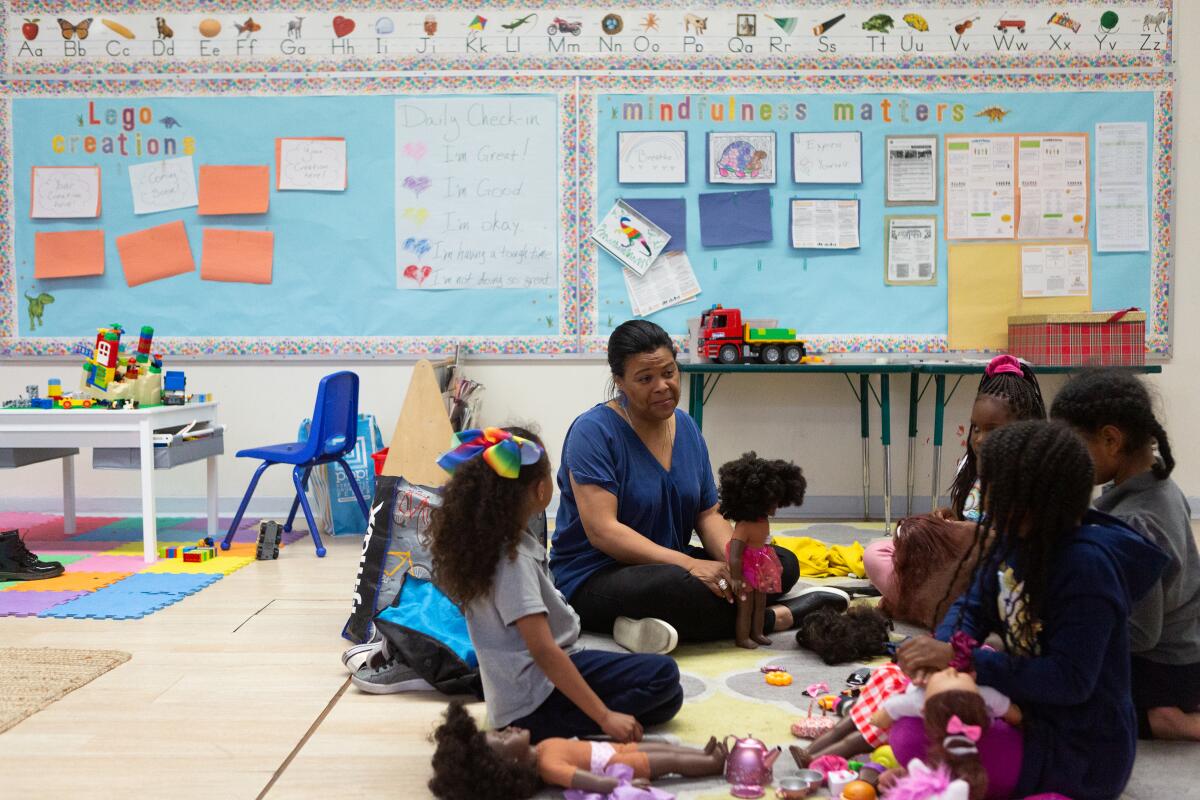
Renee Curry ushered four girls into the classroom and asked them to sit on the carpet. They were bright-eyed and giggly, jittery with excitement.
Curry emptied the contents of a large reusable shopping bag onto the floor. The girls, ages 5 to 7, wasted no time. They plunged their hands into a pile of tiny plaid skirts, gingham dresses and sparkly tutus, eagerly selecting their dolls’ first outfits of the day.
“Grab your doll and we’re gonna dress them while we talk,” Curry, now seated on the rug, said as she pulled Black and brown dolls from another bag. The girls let out a collective shriek and claimed the dolls they’d been playing with for the last few weeks.
“All right,” Curry said, trying to capture the girls’ attention as they argued over whose doll was whose. “We’re going to go around and introduce our dolls.”
A first-grader cradling two babies in her lap went first. “This is Mark,” she said. “He’s 1 year old, his favorite color is green and his favorite food is broccoli and carrots.”
“Do your dolls like broccoli and carrots?” Renee asked the other girls.
“No!” they yelled in unison.
A similar scene played out every Thursday afternoon between August and March in this classroom at Crete Academy, a nonprofit charter school in South Los Angeles that serves students who have experienced homelessness and poverty.
Curry is an associate marriage and family therapist and the architect of In Defense of Girlhood, a therapy group that aims to preserve the innocence of young Black girls through doll play.
The group is a unique attempt to address “adultification bias” — a form of racial prejudice that can lead teachers and other authority figures to treat Black girls as more mature than they actually are and, as a result, give them less support or punish them more harshly than their white counterparts, research shows.
This presumption can affect Black girls as young as 5. In the case of Crete students, the effects of adultification bias are compounded by poverty; many of their parents are single, working night shifts or multiple jobs, and rely upon their children to help run the household.
So for an hour each week, Curry strives to remind her group of girls that they are, in fact, little girls. She validates their innocence by celebrating play and encouraging childlike banter. She cultivates their confidence and nourishes their friendships.
And she has a lot of fun doing it.
Back in the classroom on a chilly November day, the girls continue introducing their dolls.
“Her name is Coconut Cutie and her last name is Sunny,” said a second-grader named Ryan. “She likes to play at the skating rink.”
“My doll loves going to the club,” one girl interrupted. The others burst into laughter.
“Going to the club?” Curry asked, raising an eyebrow. “We’ll talk about that later.”
“Like I was saying,” Ryan continued, holding her doll under its arms, “her favorite phone is the iPhone 11 and her favorite pants are sweatpants.”
::
The seeds for the doll group were planted in spring 2019, when Curry had just begun giving one-on-one therapy to girls in need of extra support at Crete Academy.
As the executive director of the Center for the Empowerment of Families — a local nonprofit that runs arts and therapy programs for young people who have endured trauma — Curry stays abreast of the latest research on how youths are affected by prejudice. After reading a paper on adultification bias from the Georgetown Law Center on Poverty and Inequality, she immediately thought of the girls she’d been working with.
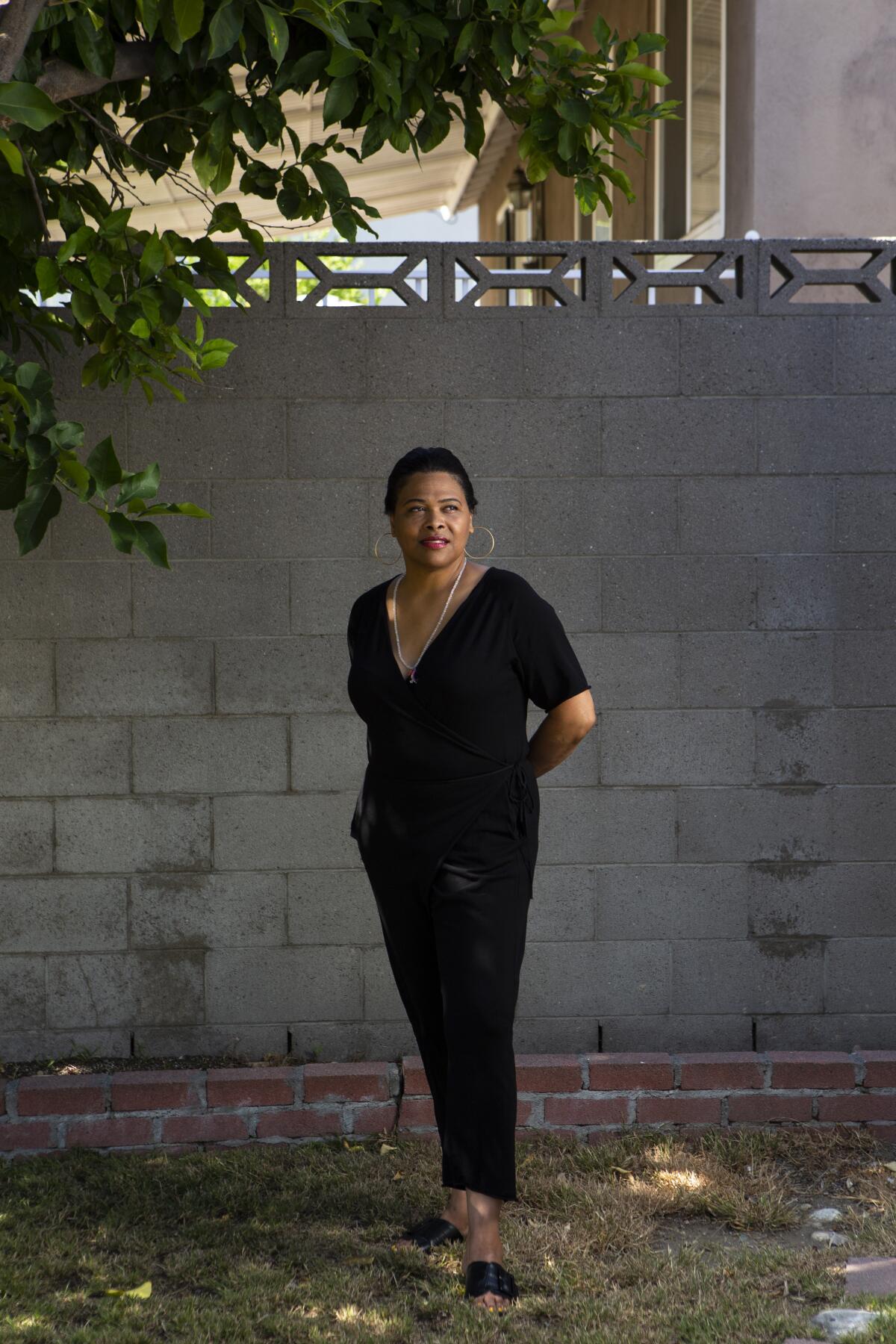
In the first study of its kind in 2017, Georgetown researchers found that adults believed Black girls needed less nurturing and protection, were more independent and knew more about sex than white girls of the same age.
“Adultification contributes to a false narrative that Black youths’ transgressions are intentional and malicious, instead of the result of immature decision-making — a key characteristic of childhood,” researchers wrote.
The study asserted that such bias contributes to the harsher treatment of Black girls in the education and juvenile justice systems, and fewer mentorship and leadership opportunities being available to them. Black girls are nearly six times more likely to be suspended than their white counterparts, according to research by the African American Policy Forum and Columbia Law School.
As a therapist, Curry knew that if children aren’t given the time and space to play, imagine, explore and be free of the pressures and stresses of their world, there’s a much higher chance that they will be more childlike as adults.
“They’ll struggle with responsibilities to take care of their own,” Curry said in an interview with The Times. “They’ll struggle with intimacy. They’ll struggle with having conversations with their partners. So we want them to experience childhood at appropriate age levels.”
Curry had observed this early abandonment of childhood firsthand.
In 2018, she helped lead a therapeutic dance program for school-age girls in the Imperial Courts public housing development in Watts. Instead of engaging in what is traditionally thought of as play, the girls interacted by showing each other Instagram posts and YouTube videos. She heard a man in the community casually call one of the girls “woman.”
When Curry got to Crete, she asked the girls she counseled whether they played with dolls. Some said they had a doll at home but were sometimes stopped from playing, and were instead told to take care of a younger sibling or to brush their teeth. One girl said her grandmother sold her doll because her family needed money for rent.
“Playtime from their perspective was like a privilege, and so I just wanted to change that narrative for them,” Curry said.
When she read the Georgetown study on adultification bias, a light bulb went off.
“I totally think this is real. This is a thing,” Curry told Crete Principal Hattie Mitchell after sharing the study with her. “I want to do something.”
::
Curry’s first group of girls were in fourth and fifth grades, ages 9 to 11.
Some had recently lived in homeless shelters, and their parents, most of whom were running the households alone, were adapting to life outside a shared space environment.
It was a struggle to get those girls to play with the dolls. Curry could see in their eyes that they wanted to but were too embarrassed. They looked to their peers for validation, and no one wanted to be called a baby.
“I’m too old. I don’t play with dolls,” one 9-year-old said. Another girl left the room.
Curry felt she needed to try with younger girls. Research shows that creative interventions such as play therapy have better outcomes when started before puberty, which can start as early as 7.
Mitchell identified a few girls in kindergarten through second grade who she thought would benefit from the group. They were girls who had already been assigned a social worker because something difficult had happened in their families, events that led to changes in their behavior or academic performance. Others were overwhelmed by the daily grind of poverty.
“When you think about a single mom with three kids, what will she buy? Food and clothes. Shoes and backpack,” Mitchell said. “Toys are last on the list.”
The younger girls were more interested in the dolls. Curry didn’t have to prod them as much to play, which made it easier for her to focus on steering the conversation.
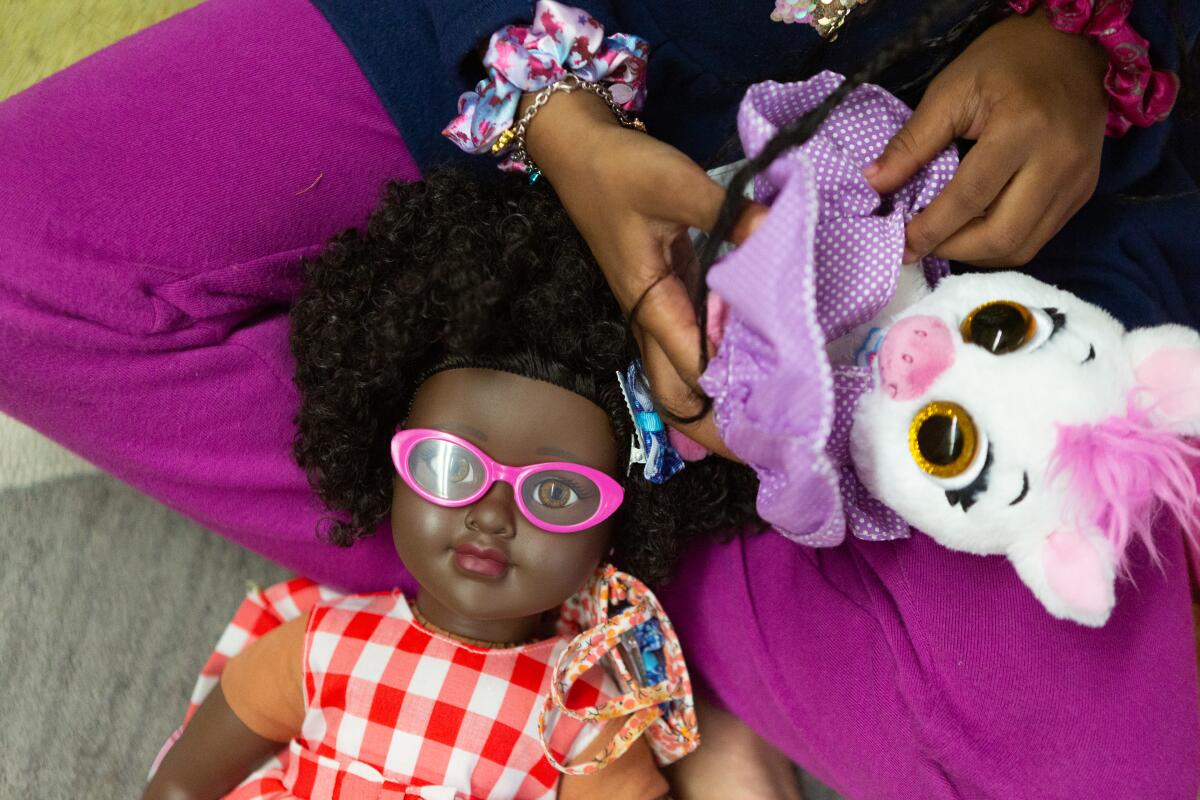
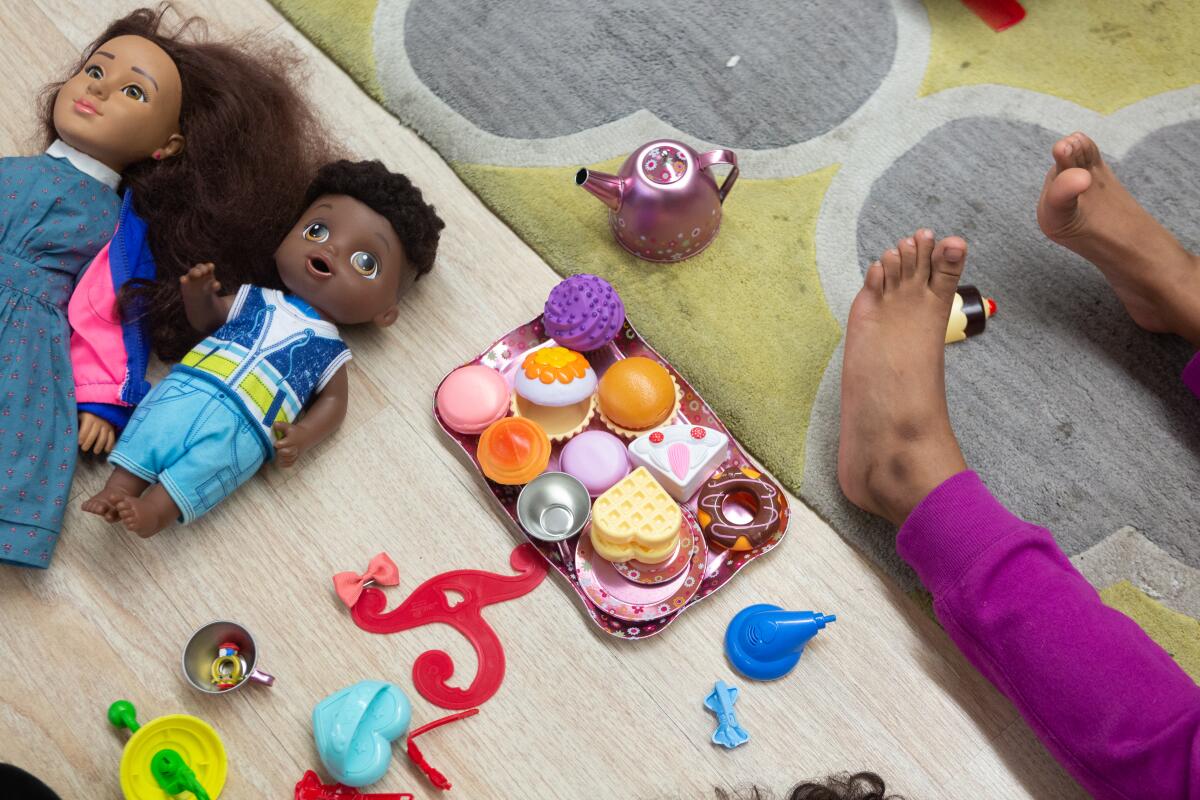
Early on, Curry noticed that girls used their dolls as a way to work through complicated emotions and situations.
During a session in November, one girl told the group that her doll, Tiana, was being bullied at school.
“Uh oh,” Curry said. “ What do you do about that? How would you feel if you were bullied? Has anyone been bullied before?”
“Me!” one girl yelled.
“I told on him once and he still kept on doing it,” another said.
The girls dropped the topic to argue over some tiny bluejeans. Curry redirected them.
“So, I would like to know — if she says her doll is bullied, can your doll help her?”
“Yes!” they yelled in chorus.
“Can you show me what that would look like?” Curry asked.
One girl picked up a doll wearing cat-eye glasses and one hot pink soccer cleat and pretended that it was speaking to her friend’s doll.
“If someone pushes you down, I’ll help you out,” she said. “If someone says you’re ugly, I’ll tell them that you’re not.” The girls smiled at each other and forced their dolls to hug, an awkward entanglement of plastic limbs.
::
In the 2017 study, “Girlhood Interrupted,” researchers Jamilia Blake of Texas A&M University and Rebecca Epstein of Georgetown University examined how adults perceived the innocence — or lack thereof — of Black girls specifically. The report was built on earlier research that found Black boys as young as 10 are far more likely than their white peers to be seen as older, guilty of suspected crimes, and face police violence if accused of a crime.
Blake had spent years looking at the experiences of Black girls in the education system. She saw that they were often over-suspended and treated more punitively than other students, and she suspected that the pattern was tied to racist stereotypes of Black women as overly sexual, angry and aggressive.
“Then I thought, in order to map those stereotypes onto girls, people must be seeing them as women, not children,” Blake said in an interview.
In a follow-up study in 2019, Blake and Epstein drew on interviews with Black women and girls across the U.S. to learn more about how they experienced adultification bias. Participants drew a connection between their own experiences and the treatment of enslaved women and children, who were not often able to play and were punished for acting their age.
“The slave trade [demanded] that Black girls be adults and hold the sexual fantasies of the master,” one woman, now in her 30s, told researchers. “We had to cook, we had to clean, we had to pick the cotton…. This was about commodification.”
One participant described a traffic stop in which a police officer refused to believe that she was 15 years old. The officer handcuffed and fingerprinted her, insisting she was too old to not carry an ID.
These anecdotes hit close to home for Curry. She recalled receiving less compassion from teachers at her elementary schools in the Carthay and Larchmont neighborhoods of Los Angeles.
There were times when teachers could have asked Curry if she was OK, like when her parents separated, but they didn’t. “The assumption was: These girls can take care of themselves,” she said.
Adultification bias can be unknowingly enforced by the parents of Black girls even as they seek to counteract it, according to anecdotes collected in the 2019 Georgetown report. Participants shared that their mothers in particular instilled in them maturity, strength and independence in order to ensure that they would thrive despite the racism and inequity they would surely encounter, the researchers wrote.
That being said, Blake said, Black girls are subject to adultification bias regardless of their home lives or whether they mimic grown-up behaviors.
“No matter what your skin color, a 7-year-old’s brain is a 7-year-old’s brain,” Epstein said. “Our systems have to treat children as children.”
::
While the long-term effects the doll group might have on the girls are unknown, Curry said, she witnessed a lot of growth during their seven months together.
Curry watched the girls’ imaginations expand. The stories they shared about the lives of their dolls became more nuanced and vulnerable, and they began to speak more candidly of family dynamics.
Mitchell noticed that the girls would hold hands and throw their arms around one another — things she didn’t see them doing in other social groups.
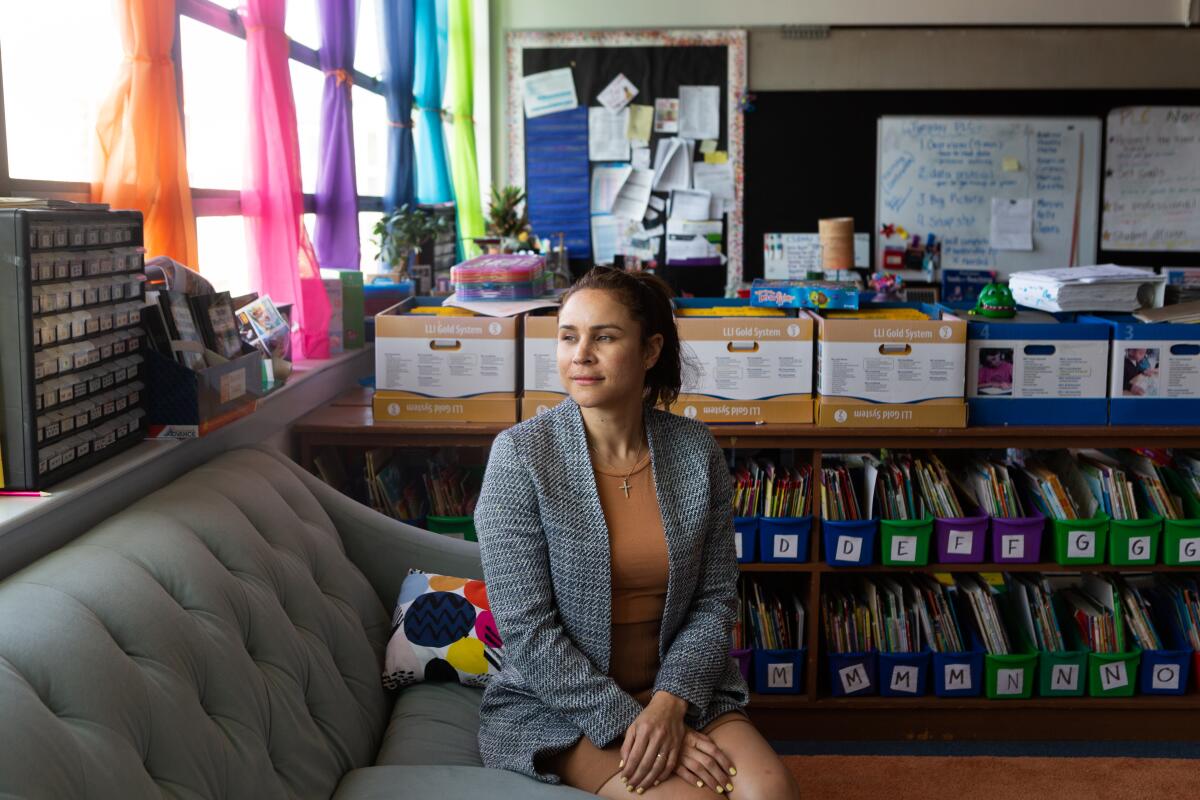
“There’s a sense of connection and stability and security that wasn’t there before,” Mitchell said in March. “For the moments that they’re in the group, their guard is down. They’re not acting cool. They’re just being kids.
“For that hour, the world is a perfect place.”
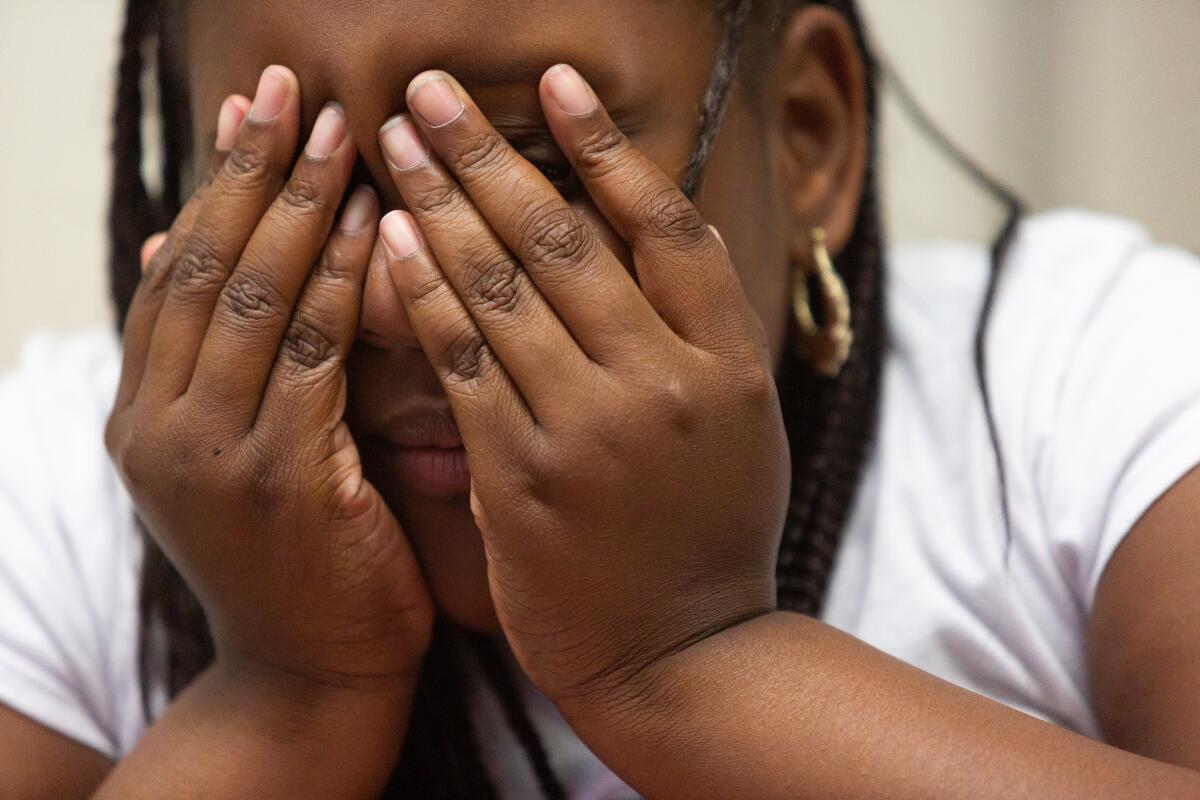
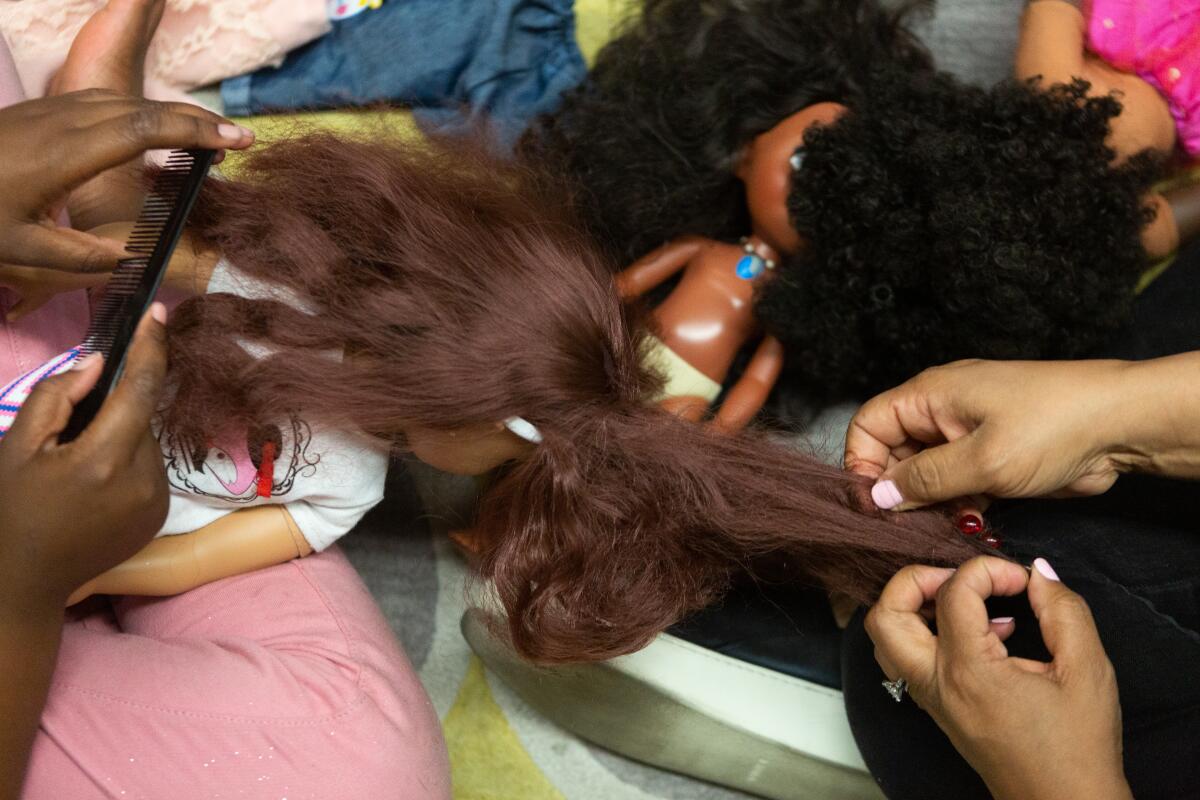
During one of the last sessions in March before Los Angeles schools closed in response to the COVID-19 pandemic, a first-grader in the group pushed the palms of her hands into her doll’s chest as it lay on the ground, performing CPR.
“By the way,” the girl said to the doll, “you are never spending time with your boyfriend again. Cuz that’s how you got sick.”
“Can we stop talking about boyfriends? That’s uncomfortable,” another girl said.
The topic of boyfriends came up often, and Curry never missed an opportunity to steer the discussion in a way that revealed something about how the girls see themselves and their place in the world.
“What should little girls talk about?” Curry asked the group.
“Dogs!” one girl exclaimed, setting a plastic waffle on a flowery pink plate next to her doll.
“And boyfriends!” another girl called out.
Everyone giggled except Ryan. She pondered the question seriously. “Movies, the future and what you wanna be when you grow up,” she said.
Ryan’s answer prompted a discussion about the girls’ career aspirations: A tattoo artist. A gymnast. An engineer. Someone who helps homeless people.
“That’s very nice,” Curry said. “There’s lots of good stuff ahead for all of you.”
More to Read
Sign up for Essential California
The most important California stories and recommendations in your inbox every morning.
You may occasionally receive promotional content from the Los Angeles Times.











